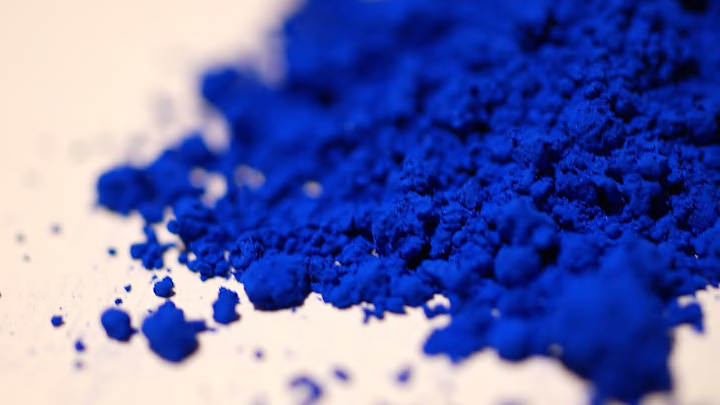Many artists go through stages where they take inspiration from extremely specific muses. Yves Klein, a French abstract artist working in the mid-20th century, took “Blue Period” to a new level.
Klein worked in monochromes—individual colors that he believed expressed feeling and “made visible the absolute,” according to his official website. His works often took the form of objects or canvases painted in a single, unwavering shade of red, blue, pink, or green.
Klein didn’t just work with blue—he invented a version of it. In the 1940s, he began painting monochromes with ultramarine, a brilliant blue pigment, but grew dissatisfied with the color’s tendency to fade over time. While vacationing in Nice in 1956, he experimented with adding a polymer binder to the pigment—and fell head over heels in love with what he created. During the rest of his short life (he died of a heart attack in 1962, at age 34), Klein produced nearly 200 blue monochrome paintings, believing the color expressed pure energy.
After Klein patented his color as International Klein Blue (IKB) in 1960, he rarely used anything else. He associated IKB with pure space and an intangible quality that reached beyond anything material—though he used his monochromatic IKB paintings to conduct experiments on the material value of art. In 1957, Klein painted 11 identical blue canvases and marked them at different prices. The variation, he said, reflected the unique spirit each one had. He got the asking price on all of them.
Klein’s obsession with the deep shade didn’t end at paint on canvas; he also used the hue in unconventional ways. He once released 1001 blue helium balloons to extend the color’s vibes to everyone in Paris, and liked to recreate classic sculptures like the Venus de Milo with an IKB twist. In 1960, Klein staged a piece of performance art in which nude models covered themselves in IKB paint, then pressed their body parts to canvases.
Even if you're not an Yves Klein fan, IKB may ring some a pop culture bell for you. Here’s why:

The Blue Man Group is Yves Klein Blue. It’s more than just their color—their collective persona is partly based around Klein’s work. According to ex-Blue Man Isaac Eddy, “The Blue Man is reflecting the audience itself and the Blue Man is summoned by the audience itself ... Put more simply, you could think of it as the color blue. It’s cased off that Yves Klein Blue. That bright, bright cobalt that he created himself, and that he covered [a series of objects and paintings] with and nothing else. So the concept is that we emerged from a painting like that.”
Something tells us Yves Klein would be pleased.
Read More Stories About Art:
A version of this story was published in 2017; it has been updated for 2024.
